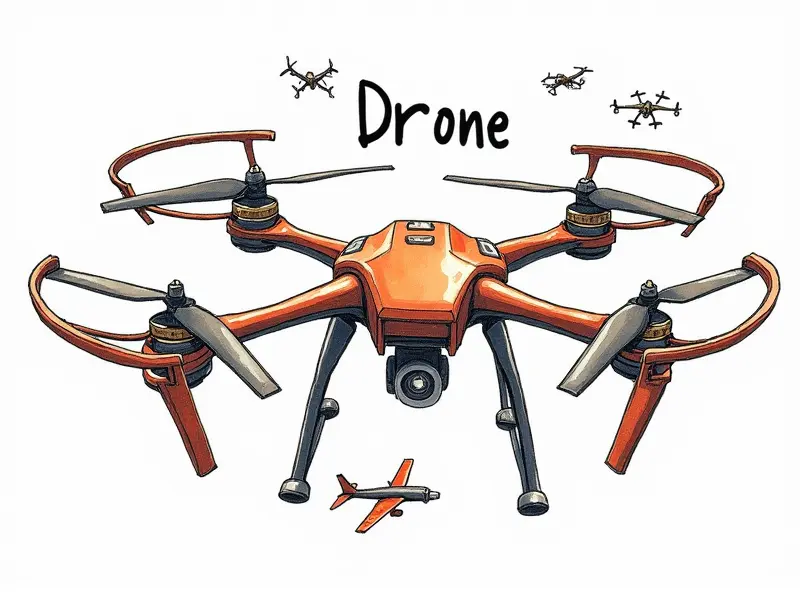Best FPV racing setup?

Ultimate Guide to Building FPV Drones
Welcome to the world of FPV (First Person View) drone racing! This exhilarating hobby combines technology and adrenaline as you race through courses at high speeds while viewing the action from your drone's perspective. To get started, it’s crucial to understand the components that make up a top-notch FPV racing setup.
Top Components for FPV Racing Setup
The heart of any FPV racing setup lies in its core components:
- Frame: Choose lightweight, durable frames designed specifically for racing. Popular options include the Whoop frame and the Runcam Swift Pro.
- Flight Controller: A reliable flight controller is essential for precise control. The Betaflight firmware on boards like the Naze32 or Pixhawk offers advanced features.
- Battery: High-performance LiPo batteries provide the power needed to sustain high speeds and maneuverability. Look for batteries with a capacity of 130-150mAh.
- Motor & Propeller: Fast, efficient motors paired with lightweight propellers ensure optimal thrust and speed. Brands like Emax and T-Maxx are highly recommended.
Best Budget FPV Racing Setup Ideas
If you're just starting out or looking to save money, there are several budget-friendly options available:
- Budget Frame: The Whoop 135 frame is a popular choice for beginners due to its affordability and performance.
- Affordable Flight Controller: The Naze32 Lite version offers basic features at an economical price point.
- Battery Options: Opt for high-quality 1S LiPo batteries with a capacity of around 100mAh to start.
Tips for Choosing an FPV Racing Camera
The camera is one of the most critical components in your setup, as it directly affects how you see and react during races:
- Resolution & Field of View (FOV): Higher resolution cameras offer better clarity, while wider FOVs provide a broader view. The Runcam Split Mini is a popular choice for its balance between quality and price.
- Lens Type: Fixed lenses are more common in racing due to their stability and reliability compared to zoom or vari-focal lenses.
Optimal Antenna Choices for FPV Racing
The right antenna ensures clear, uninterrupted video feed during races. Consider the following options:
- Whip Antennas: These are lightweight and easy to install, making them ideal for quick setups.
- Bowtie Antennas: Known for their superior range and stability, bowties are a favorite among experienced racers.
Must-Have Accessories for FPV Racing Drones
In addition to the core components, several accessories can enhance your racing experience:
- VTX (Video Transmitter): A high-quality VTX like the Runcam Swift 3 ensures clear video transmission.
- Battery Eliminator Circuit (BEC): This component allows you to power your FPV gear without using a separate battery, reducing weight and improving performance.
- Vibration Dampeners: These help reduce camera shake for smoother footage during races.
Maximizing Performance in FPV Racing Builds
To get the most out of your setup, focus on these key areas:
- Tuning: Fine-tune your flight controller settings to optimize performance and stability. Use tools like Betaflight Configurator for easy adjustments.
- Battery Management: Ensure you have a reliable battery charger and monitor the health of your batteries regularly.
Essential Gear for FPV Drone Racing
In addition to building your drone, you'll need gear to support your racing activities:
- Goggles: High-quality goggles like the Runcam Swift 2 provide a clear and immersive view of your races.
- Racing Gear: Protective clothing such as helmets and gloves can help keep you safe during intense racing sessions.
Quick Guide to Building an FPV Racing Drone
Familiarize yourself with the basic steps involved in assembling your drone:
- Select Components: Choose high-quality frames, flight controllers, motors, and other essential parts.
- Assemble Frame: Carefully attach all components to ensure a secure build.
- Install Flight Controller & Motors: Follow manufacturer instructions for proper installation.
- Add Camera & Antenna: Mount your camera and antenna securely for optimal performance.
Tips for Assembling a Reliable FPV Setup
To ensure reliability, follow these tips:
- Test Components Individually: Before assembly, test each component to identify any issues early on.
- Secure Connections: Use zip ties and heat shrink tubing to secure all connections tightly.
Best FPV Camera for Smooth Racing Footage
The Runcam Split Mini is highly recommended due to its balance of quality, price, and performance. It offers a wide FOV and clear resolution, making it ideal for capturing smooth racing footage.
Conclusion
Building an FPV racing drone setup requires careful consideration of components and accessories that enhance both performance and safety. By following this guide, you'll be well-equipped to build a reliable and high-performing FPV racing drone. Happy racing!

